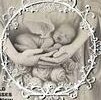Baby clothing isn’t cheap, and it’s not something that most parents want to just throw out as soon as their child outgrows it. On average, babies triple their birth weight and grow around 10 inches in their first two years, which means they go through clothes much faster than adults, leading to a lot of waste. This is why savvy shoppers plan ahead, buying conservatively and laundering often to get the most out of each outfit.
The basic newborn wardrobe should include bodysuits, onesies and footed pajamas (also known as sleep and plays). These are ideal base layers for baby because they cover the nappy, keep them warm and won’t ride up or crease. For daytime wear, consider adding long-sleeved or short-sleeved tees and cardigans for layering.
During warmer summer months, 2-in-1 dresses and rompers are also a popular choice. These can be worn with onesie tees for the ultimate in convenience when it comes to changing babies and include cuffs and snaps that don’t interfere with breastfeeding or movement. They’re also available in a variety of colors and designs that can be used for special occasions or to dress up a baby for going out.
On colder days, baby pants, leggings and shorts are great for layering with onesie tees or bodysuits. They’re available in a range of colours and designs for both boys and girls. They’re also a good option for keeping little ones warm on the stroller or car seat, especially with a cozy winter blanket.
Newborns haven’t learned to regulate their temperature yet, so they need lots of soft fabrics with a lot of stretch and breathability. Look for fabric blends that are breathable, anti-microbial and moisture-wicking to keep baby comfortable. In addition, look for clothes that have a sun-protective factor of at least 30 or higher to help reduce the risk of harmful UV rays on baby’s skin.
Gender-specific clothing has been a thing for a while, but it’s not necessary at this age. Many parents choose gender-neutral outfits for aesthetic or ethical reasons. Others do it for convenience, as newborns aren’t ready to sit up or crawl and the crotch area of their onesie can put pressure on their milk tummies.
Newborns are a finicky bunch, so be prepared to wash their clothes a lot. Be sure to have plenty of baby-safe detergent and a few stain removal products. You’ll also want to stock up on some spares, including a towel and change pad for those inevitable leaks. And don’t forget a couple of baby bibs and some cloth wipes to clean up any spilled food or drool.
